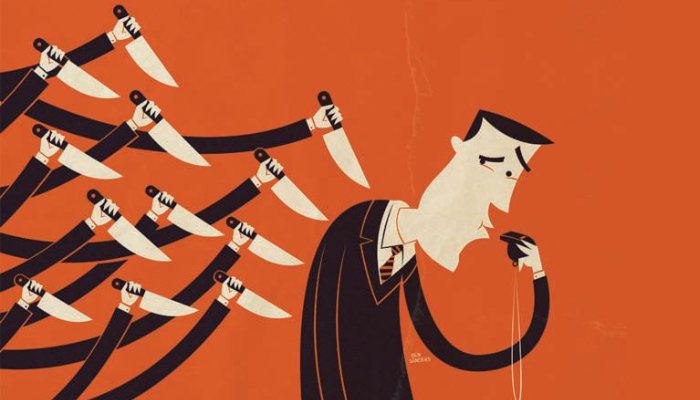
or

A cartel is considered as the “supreme evil of antitrust law”, and it receives the most severe treatment therein.
The Indian law on cartels is stated in section 3 of the Competition Act, 2002 (the Act), which prohibits any agreement between enterprises that has an appreciable adverse effect on competition (AAEC). However, in the case of cartels, sub-section (3) pursues them further, by stating that an agreement between competitors (including by associations) shall be presumed to have an AAEC if they: fix prices or conditions (directly or indirectly), limit or control the market, share the market, or undertake collusive bidding. The adverse presumption shifts the burden of proof from the Competition Commission of India (CCI) to the accused parties. This prohibition against cartels is among the Act’s provisions that were brought into force commencing May 20, 2009.
To prove the existence of a cartel, ‘smoking gun’ evidence of the agreement for anti-competitive purposes, which is mentioned above, is needed. However, no proof of the actual harm to competition in the market is required once a cartel is proved to exist; it is presumed to have anti-competitive effect, until the parties can rebut this presumption.
Since cartels typically shroud their operations in secrecy, nailing evidence may be hard to come by. Thus, competition authorities have evolved the leniency tool, which has proved immensely efficacious and popular in other jurisdictions. This weapon, similar to a whistle-blower provision, has been incorporated in the armoury of the Act and further elaborated in the Competition Commission of India (Lesser Penalty) Regulations, 2009. Thus, if a party to a cartel makes a full, true, and vital disclosure to the CCI and co-operates in the inquiry, it can be eligible for substantially lenient treatment. The first such party is eligible for one hundred per cent leniency, the second to fifty per cent and the third to thirty per cent reduction in penalty. Such disclosure will arm the CCI with critical evidence against the cartel.
The ever-present fear amongst the conspiring parties that one of them may sneak out to the CCI with ‘insider’ information is designed to de-stabilise the cartel’s unity and throw the colluders into the typical ‘prisoners’ dilemma’. The CCI’s Leniency Regulations introduce a ‘marker’ system giving priority status to leniency applicants according to the sequence in which they reach the CCI. Thus, a subsequent application will be taken up only after the earlier one has been considered and given an opportunity to furnish the ‘full, true and vital’ evidence. Therefore, the speed in approaching the CCI becomes critical in the level of leniency that can be obtained. Samir R Gandhi, Partner at Economic Law Practice, Advocates & Solicitors opines, “Leniency provisions that are provided under the Act will certainly encourage participants in a cartel to come clean. However, under the Act, the high level of discretion that is vested in the CCI while deciding on whether to award leniency to the whistleblower, coupled with the uncertainty on how the CCI will exercise its discretion, is likely to make some companies wary of using the leniency provisions in the Act.”
In the matter of penalties too, cartels are in a special doghouse. A violation under the Act can attract a penalty of up to ten per cent of the enterprise’s turnover. However, a cartel can invite, for each year, a penalty up to ten per cent of the turnover or three times the annual profit, whichever is higher.
In some countries, such as USA, UK, and Canada, a cartel is even treated as a criminal offence, punishable with imprisonment, thereby establishing a high level of deterrence. In India, a cartel is not criminal, but individuals are equally liable to be slapped with a penalty; this applies to any director, manager or other employee, who is ‘in charge of the affairs’ of the company at the relevant time. Adds Gandhi, “Indian industry may require some time to adjust to the requirements of modern day definitions of what constitute ‘cartel activity’ under competition laws, before imposing a criminal sanction.” In the UK, individuals may also incur disqualification from holding directorships for a number of years.
Antitrust history is replete with cases of busted and punished cartels, including the use of the leniency tool to unravel the conspiracies. Senior executives have had to serve prison terms, especially in the USA. A landmark case was the global lysine cartel, recently dramatised in the Hollywood movie, The Informant. The recent marine hoses cartel investigation demonstrated the high level of international cooperation between competition authorities, particularly those of EC, UK and USA when acting against cartels. In that case, the fines and damages paid by six producers, involved in price-fixing, amounted to GB 150 million, while the fines and imprisonment terms ordered on individuals added up to GB 1.48 million and 158 months respectively. Bid rigging and collusive bidding by the Dutch and the UK construction industries revealed the industry-wide virus in the sector, and the UK authorities declared this as one of their biggest cartel investigations.
Industry associations have often been found to function, sometimes inadvertently, as a platform for coordination of prices or tender bids. Such suspicions have even been often expressed in India in the case of certain sectors, such as cement, truck haulage, explosives and airlines. Fortunately, the Indian Act recognises this by including agreements between ‘associations of enterprises or associations of persons’ that may be held anti-competitive.
Procedurally, in India, a cartel investigation may be initiated by the CCI on its own or by any person providing the CCI with material to establish a prima facie case. The CCI must then order the Director General (DG) to investigate and report in the matter; the DG is given the same powers as that of a civil court for conducting this investigation. He can also undertake search and seizure (‘dawn raid’) with the permission of the Chief Metropolitan Magistrate, Delhi. The CCI would then serve the DG’s report on the parties, and after hearing them, pass a


“Indian industry may require some time to adjust to the requirements of modern day definitions of what constitute ‘cartel activity’ under competition laws, before imposing a criminal sanction.”
Detection of Cartels- Issues & Challenges before Competition Commission of India (CCI)
G R Bhatia Partner & Head of Competition Law Practice, Luthra & Luthra Law Offices and former Additional Director General, CCI & MRTPC.
Provisions in the Act to detect and punish cartels make it imperative for business to be on the right side of the law and refrain from certain types of horizontal agreements but at the same time they need not be fearful of entering into precompetitive cooperative agreements such as pooling of resources for research & development or bids in consortium if terms & conditions of tender so permit or joint advertisements etc. There is a list of horizontal agreements in respect of which there is a rebuttable presumption of having appreciable adverse effect on competition whereas other horizontal agreements are tested on the touch stone of ‘rule of reason’. The prosecutor’s duty is discharged by bringing on record convincing evidence to prove its existence. The determination of harm caused will not only create the right perception but act as a saviour of order before the Appellate Tribunal or the Supreme Court and further facilitate in assessing compensation payable to victims. The elements of ‘product differentiation’, ‘brand reputation’, ‘emotional connect of buyer with a product’ will be areas which the prosecutor has to keep in view before concluding that the products are same or similar and substitutable. .
The three pre-requisites for successful implementation of a leniency programme are – high risk of detection, credible threat of sanctions and the transparency or certainty in the operation of programme. All these create fear and deterrence amongst colluders and build confidence in those who crave to avail of refuge under leniency.
The trade and its associations need to take note of “Do’s and Don’t’s” and the CCI, before embarking on enquiry, should undertake comprehensive analysis of market, its structure, traits of product, cost, price and attendant issues so that its resources which are already scarce are deployed in right earnest and the charged one is not unnecessarily burdened of defending itself which costs both money and time.
final order. Failure to comply with any direction of the CCI can entail further penalty and compensation, and even lead to criminal proceedings before the Magistrate.
An appeal from the order of the CCI lies to the Competition Appellate Tribunal (COMPAT), which is also empowered to grant compensation following a finding of violation by the CCI. A further appeal from the decision of COMPAT lies before the Supreme Court.
As Adam Smith wrote in The Wealth of Nations, “People of the same trade seldom meet together, even for merriment and diversion, but the conversation ends in a conspiracy against the public or in some contrivance to raise prices.” Cartels have been said to exist since generations, but under modern competition laws, including in India now, they face serious challenge from competition authorities. Indian businesses and trade associations have to seriously reconsider their business practices and adopt specific compliance programs to minimise the risk of competition law violations.
Vinod Dhall, Head, Dhall Law Chambers, and former Head, Competition Commission of India.

Lex Witness Bureau

Lex Witness Bureau

Lex Witness Bureau

For over 10 years, since its inception in 2009 as a monthly, Lex Witness has become India’s most credible platform for the legal luminaries to opine, comment and share their views. more...
Connect Us:


The Grand Masters - A Corporate Counsel Legal Best Practices Summit Series
www.grandmasters.in | 8 Years & Counting
The Real Estate & Construction Legal Summit
www.rcls.in | 8 Years & Counting
The Information Technology Legal Summit
www.itlegalsummit.com | 8 Years & Counting
The Banking & Finance Legal Summit
www.bfls.in | 8 Years & Counting
The Media, Advertising and Entertainment Legal Summit
www.maels.in | 8 Years & Counting
The Pharma Legal & Compliance Summit
www.plcs.co.in | 8 Years & Counting
We at Lex Witness strategically assist firms in reaching out to the relevant audience sets through various knowledge sharing initiatives. Here are some more info decks for you to know us better.
Copyright © 2020 Lex Witness - India's 1st Magazine on Legal & Corporate Affairs Rights of Admission Reserved